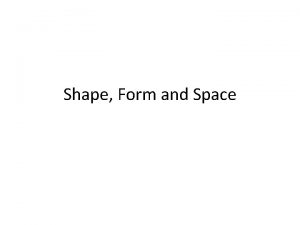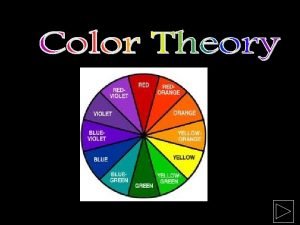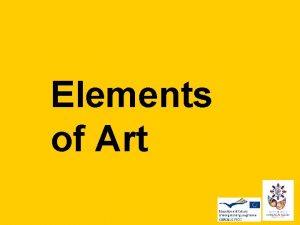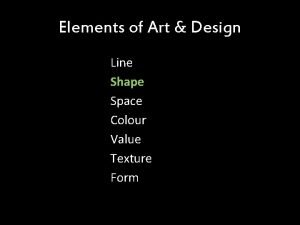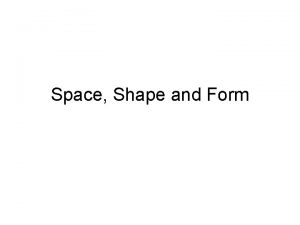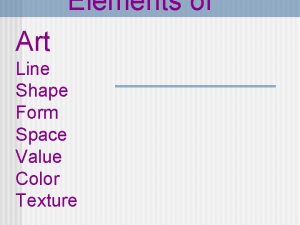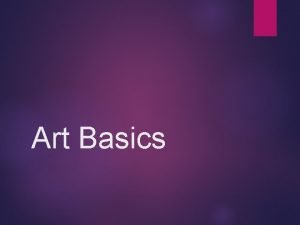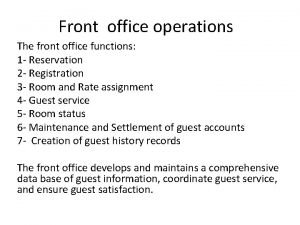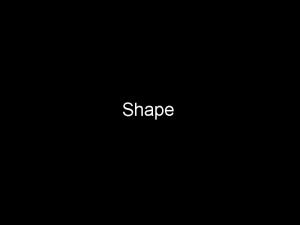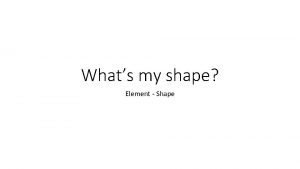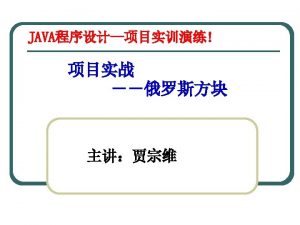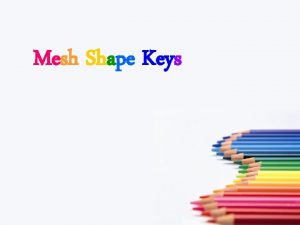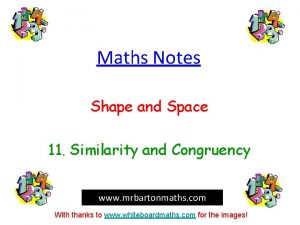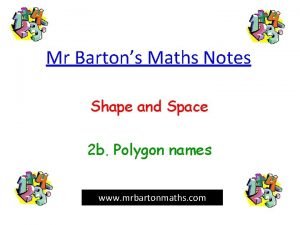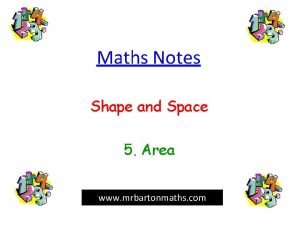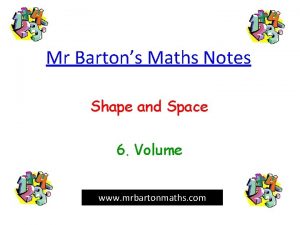Senior Maths SHAPE AND SPACE Shape and space












- Slides: 12

Senior Maths SHAPE AND SPACE

Shape and space – 2 D Shapes �Children need to know �Names of 2 D shapes �Definition of a polygon: a 2 D shape bordered by straight lines which has the same number of sides as it has angles �Examples of polygons: triangle, quadrilateral, pentagon, hexagon, heptagon, octagon, nonagon, decagon �Properties, number of sides, number of congruent sides, number and types of angle, sum of angles (divide into triangles)

The Joy of Triangles! • 3 types of triangle: equilateral, isoceles and scalene, type dependent on number of congruent sides and angles! • 3 equal sides, 2 equal angles = equilateral • 2 equal sides, 2 equal angles = isoceles • 0 equal sides, 0 equal angles = scalene • Right angled triangle a special case, can be scalene or isoceles but never equilateral • Angles in a triangle always add up to 180 • To find the missing angle in a triangle, add the 2 given angles and subtract from 180 • Children should be able to construct a triangle given the length of 2 sides and one angle. • Children should be able to calculate the sum of the angles in any polygon by dividing it into triangles. • Discuss practical use of triangles e. g. in roof struts.

Other 2 D shapes �Children will need to know names and properties of polygons from 4 – 10 sides �Will need to know: number and types of angles, number of sides, number of parallel sides, number of equal sides.

Lines and angles �Definitions of lines: vertical, horizontal, diagonal (oblique) parallel and perpendicular – last 2 terms present difficulty. Vertical Horizontal Diagonal Parallel Perpendicular

Types of angles

Measuring and constructing angles �This is a BIG problem for a lot of kids! �Introducing …the protractor!

The Protractor �A major cause of confusion is which line of figures to use. �We explain it as follows: The line of figures you use depends on (a) whether you measure from the right or the left or (b) whether you’re measuring an obtuse or acute angle. �Here’s a useful link: http: //www. mathplayground. com/measuringangles. html

3 D Shapes With 3 D shapes, the major issues are: �Number of faces �Number of edges �Number of vertices �Identification of shapes �Identification and construction of nets

Example �Look at the net below. What 3 D shape does it represent?

Example (2) �Identify this shape: �How many faces has it? �How many edges has it? �How many vertices has it? �Will it stack neatly with other shapes of the same type?

Rotations �This is an area which causes frequent problems. It requires a specialised skill – spatial ability. �Here’s an example: Rotate this shape 90 clockwise. �(a) (b)
 Shape matching and object recognition using shape contexts
Shape matching and object recognition using shape contexts Template matching
Template matching Shape form and space in art
Shape form and space in art Form shape and space
Form shape and space Line value shape form space texture and color
Line value shape form space texture and color Line shape form
Line shape form Small areas of white used to show the very brightest spots
Small areas of white used to show the very brightest spots Aerofoil shapes
Aerofoil shapes Line shape and form
Line shape and form Da vinci
Da vinci Basic function of front office
Basic function of front office Alonzo tracy mourning high school
Alonzo tracy mourning high school Department of health and senior services missouri
Department of health and senior services missouri


